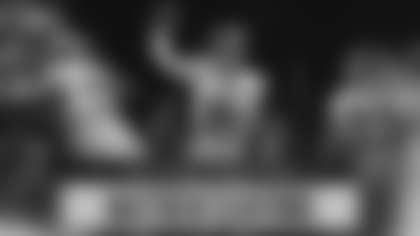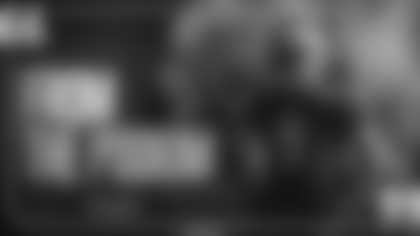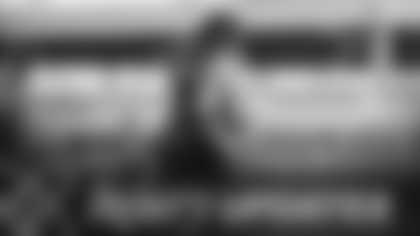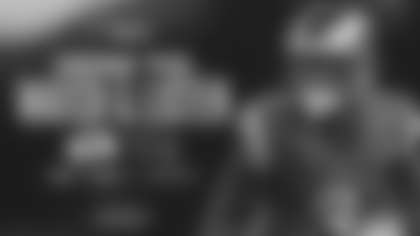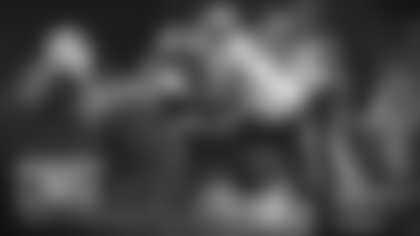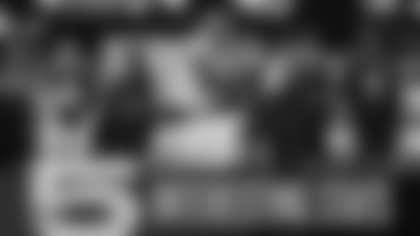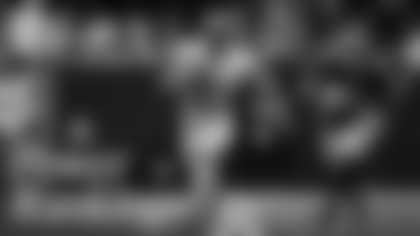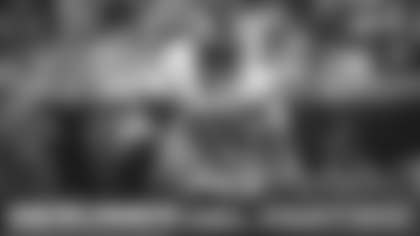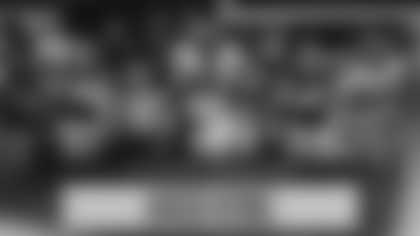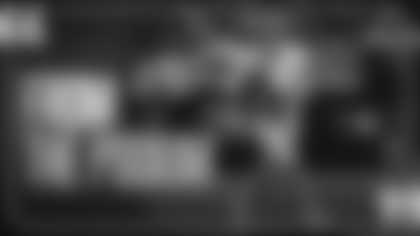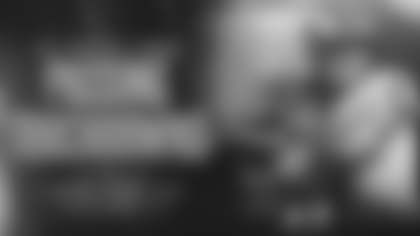In 1960, Ken Norris' grandfather moved from South Bend, Indiana to Los Angeles, and later met the cameraman at the San Francisco 49ers who happened to be Mickey Dukich's best friend in the league.
That cameraman, Walt Porep, also did films for the Cal football team, so when Cal got to play Notre Dame, Norris' grandfather got to know Porep. When Norris' grandfather moved out to California, he'd go to a game and always go to the Rams-49ers games.
"This happened for a couple of years," Norris recalled. "One game, Walt Porep left, he said his goodbyes to my grandfather, and Mickey said, 'Don't you have to go with him?' He says, 'No, I don't work for the 49ers, I'm just a friend. I live here in Southern California.' And he said, 'Well, why don't you come help me?'"
Thus began the connection between Norris' grandfather and Dukich that eventually led to the two of them, and later Norris, working with Dukich after Dukich became the first full-time cinematographer for an NFL team – paving the way for the countless video professionals who followed and, more recently, an Award of Excellence from the Pro Football Hall of Fame.
Dukich's path to the Rams, and the beginning of his pioneering work
Dukich brought Norris' grandfather in and began splicing film, doing so for many years until Norris was of age. Norris' grandfather knew Norris was a big sports fan and got him down in 1976 splicing film for Dukich when Norris was 13.
"That's where Mickey taught me my trade," said Norris, who worked with Dukich from 1976-88 – full-time beginning in 1982 – before going to work for UCLA in 1989.
A member of the Washington State golf team, Dukich originally moved to California after graduation in the 1950s to get into the movie business. According to the Spokane (Washington) Spokesman-Review, one of Dukich's golfing buddies happened to be an employee of the Rams, and the Rams were looking for help photographing the team. The golfing buddy asked Dukich if he wanted to make a few extra bucks, and Mickey took him up on the offer.
That eventually led to working with then-Rams head coach Sid Gillman. An innovator himself, Gillman had a brother who had a projection house where Gillman would go to splice the film himself, according to Norris.
"(Gillman) was the first one to actually make a cut-up reel," Norris said. "Well, he didn't really have that much time to do it. Mickey had a friend who brought him to meet Sid, and Sid asked him, 'Are you able splice film?' He said, 'Sure, I can do that.' And that's how Mickey got involved with Sid. Well, Mickey created not only the stuff that's well-documented – the short-yardage and goal-line cut-ups – but he took it to another level."
Advancing the process
Dukich would take take-off sheets – what coaches would use when they sat and watched game film to write down all the information pertaining to a play, such as first and 10 on the minus-20 yard line, they line up I-Pro formation, they ran this particular play – and encode those sheets. Today, coaches have computers to do that, but back then, they had to write that information down on sheets.
"He would make copies of those sheets, (and) he had what we call 'The Bible,'" Norris said. "So back in those days with film, you could only put one play of the film on one cut-up reel, where today that one play could reside on, you know, 10 different cut-up reels if it meets that criteria. So they were able to study back then only – if it was a shortage, they can only study short yardage with that one play. If that play was a third-down play reel, and it was a run, and they wanted to study that on a different reel, the would have had to make a copy of that video to put it on the other reel."
Thus, Dukich would have to take the takeoff sheet that the coaches created and create and a hierarchy – this is Reel 1, this is Reel 2, this is Real 5, this is Reel 7 – and then break down the film.
"Put it on Reel 1, put the next play on Reel 7, put the next play on Reel 3, and so forth," Norris said. "So we had these take-up reels that were like seven-across and stacked two-high, so we ended up creating 14 different cutups for coaches two different game films, like the last two game films. Mickey, he was the keeper of 'The Bible,' all that data."
Norris said that back then, film was expensive, but the Rams weren't shy about spending the money on film stock and chemicals. Dukich had a budget, but a lot of times he would go over it because the coaches wanted individual drills shot. Norris also said Dukich was probably the first to film those. Eventually, the rest of the league caught on to what Dukich had been ahead of the game on, in terms of providing higher-level practice filming.
"He actually probably started the shooting more drills at practice, and I think that was adopted quickly by other coaches. What happens when coaches leave one team to go to another, they bring some of the practice drills, schedules, whatever, And they say, 'Hey, I need this filmed.' And guys will say, 'We don't do that here.' Well, then the head coach will get involved and say we now do it here.' So it's like, if you didn't do it before, you do it now, because that's how the game evolves."
Dukich's legacy
Norris, who is now retired, said there are "very few of us left in this generation" that have done film, video, digital video and non-linear (meaning SD card capturing). He said that Dukich was ahead of his time in the fact that Dukich embraced the technology advancements.
Dukich also loved where the technology was heading – for the most part.
Norris recalled a funny story about how everyone thought those advancements would create more free time, with Dukich responding that the coaches would find something for them to do more of and effectively fill that free time – in other words, Dukich correctly predicted that coaches would find other things and need to get it faster, quicker, sooner.
"And he was right," Norris said. "They always found something – 'Ok, well, we don't need 14 reels, we need like 20-28 reels, now we need to double our output. I mean, it's like, with the addition of PFF and all that other data that's at our hands, we can do an entire season cut-up. Although it takes little time to do it, there's other things that I go on. I mean, I think was just as busy, and I'm sure he was, my last year at UCLA as I was my first year at UCLA. It did take longer to produce the cut-ups back in the film days because it was less-than-real time, because you had to basically tear the film, put it on a reel, and splice it. They had these hot splicers that were electronic and use cement to put them together."
Today, there are hundreds of jobs in video technology within football teams across the college and pro levels, thanks in large part to the work of Dukich and Gillman – something not lost on Norris especially.
"Between him and Sid Gillman, I believe that every video director across the nation, whether it's college or pro, have jobs today because of them and what they started," Norris said.
"There was a pioneer award given to me in 2012, but it was Mickey and Sid Gillman who were the ones I thought of when winning that award. It was Mickey's guidance, and the thoughtfulness of what Sid had and what he desired for a position to be at an NFL club, that's the reason why we all had jobs, and that's the reason why guys have jobs today, is from their forward-thinking to have a position like that in sports."



